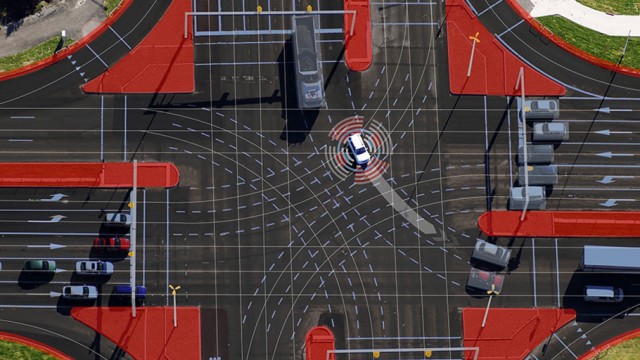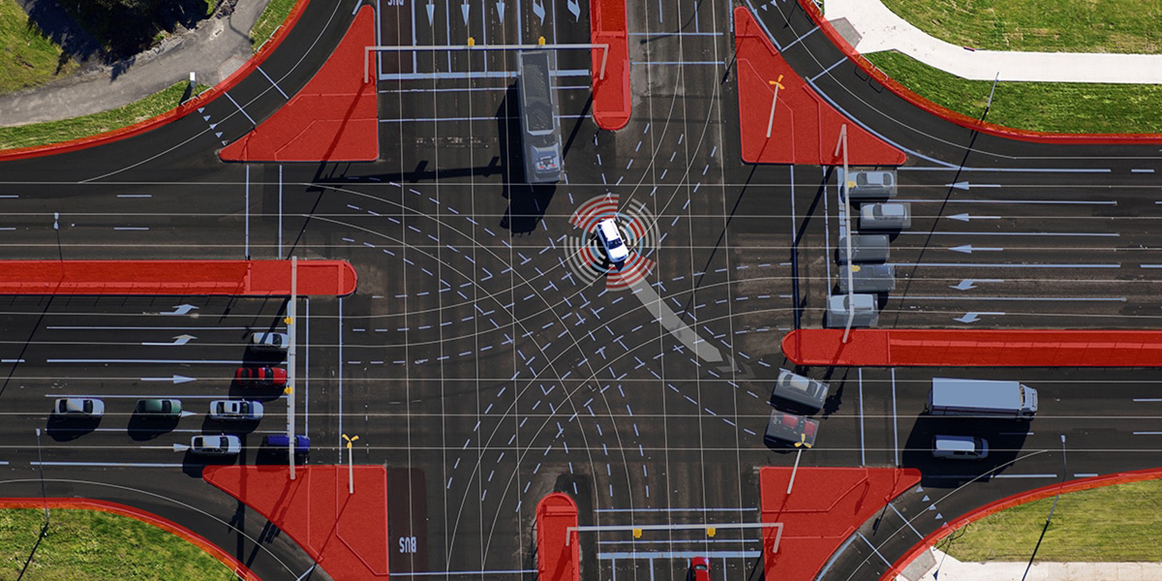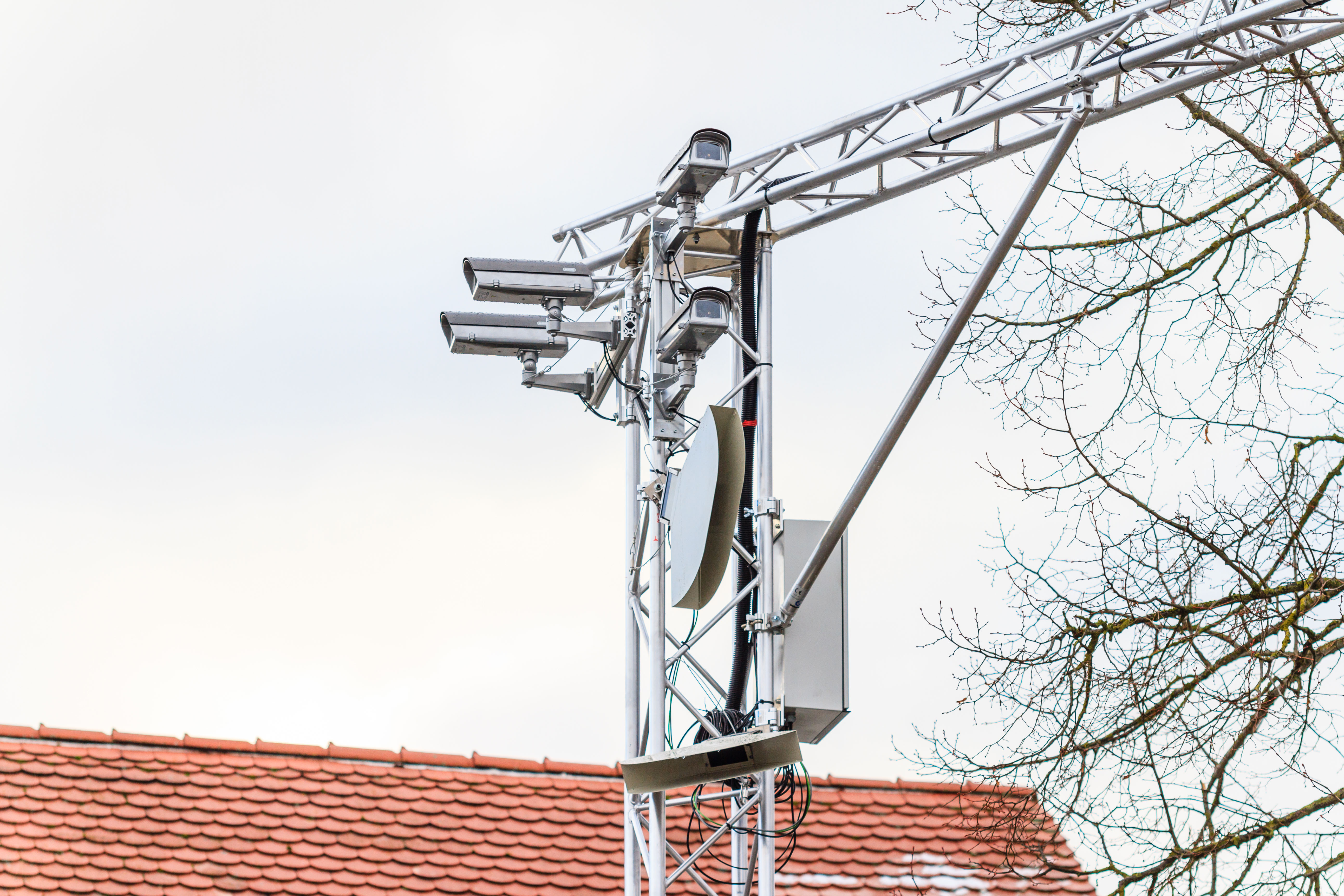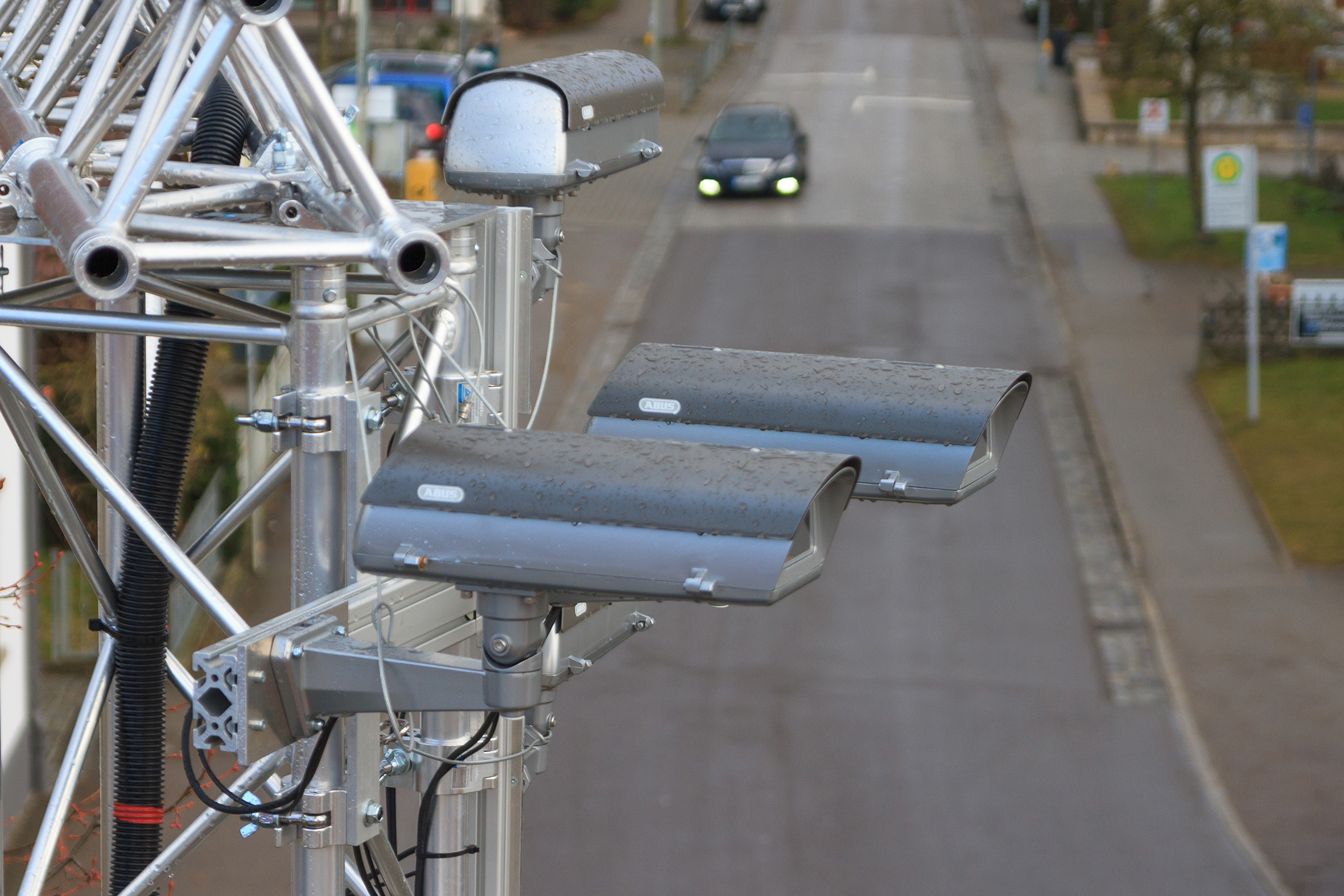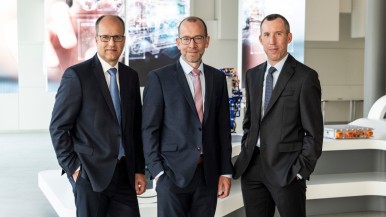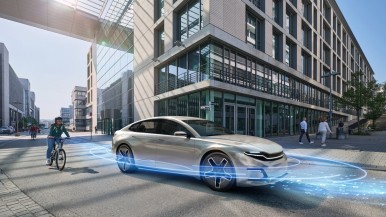Stuttgart, Germany – Pedestrians obscured from view by vehicles, cyclists passing in front of the car, buses that suddenly approach: negotiating city traffic can quickly become a difficult task. Of all things, it could be streetlights that make urban traffic safer and provide automated vehicles with an overview of the traffic situation. This was the subject of the MEC-View research project. The project required streetlights to be fitted with video and lidar sensors, which then used advanced cellular technology to provide vehicles with critical information in real time, allowing them to detect obstacles – whether other cars, bicycles, or pedestrians – quickly and reliably. After more than three years of development, the project is now ready to present its findings. Partners in the project, which received 5.5 million euros in funding from the German Federal Ministry for Economic Affairs and Energy (BMWi), were Bosch, the consortium leader, together with Mercedes-Benz, Nokia, Osram, TomTom, IT Designers, and the universities of Duisburg-Essen and Ulm. The project’s associated partner was the city of Ulm, which for the past three years has been the testing ground for the sensors on the streetlights and the connectivity technology. The insights gained in the project will now be used to further develop automotive technology, automated driving, and cellular technology. In addition, the infrastructure the project has built up will now be available for further research projects to use.
Project Website:
www.mec-view.de
Project partners:
Robert Bosch GmbH (consortium leader)
IT Designers GmbH
Mercedes-Benz AG
Nokia Solutions and Networks GmbH & Co. KG
Osram GmbH
TomTom N.V.
University of Duisburg-Essen
Ulm University
City of Ulm (associated partner)
Mobility is the largest Bosch Group business sector. It generated sales of 55.8 billion euros in 2024, and thus contributed around 62 percent of total sales. This makes the Bosch Group one of the leading mobility suppliers. Bosch Mobility pursues a vision of mobility that is safe, sustainable, and exciting. For its customers, the outcome is integrated mobility solutions. The business sector’s main areas of activity are electrification, software and services, semiconductors and sensors, vehicle computers, advanced driver assistance systems, systems for vehicle dynamics control, repair-shop concepts, as well as technology and services for the automotive aftermarket and fleets. Bosch is synonymous with important automotive innovations, such as electronic engine management, the ESP anti-skid system, and common-rail diesel technology.
The Bosch Group is a leading global supplier of technology and services. It employs roughly 418,000 associates worldwide (as of December 31, 2024). The company generated sales of 90.3 billion euros in 2024. Its operations are divided into four business sectors: Mobility, Industrial Technology, Consumer Goods, and Energy and Building Technology. With its business activities, the company aims to use technology to help shape universal trends such as automation, electrification, digitalization, connectivity, and an orientation to sustainability. In this context, Bosch’s broad diversification across regions and industries strengthens its innovativeness and robustness. Bosch uses its proven expertise in sensor technology, software, and services to offer customers cross-domain solutions from a single source. It also applies its expertise in connectivity and artificial intelligence in order to develop and manufacture user-friendly, sustainable products. With technology that is “Invented for life,” Bosch wants to help improve quality of life and conserve natural resources. The Bosch Group comprises Robert Bosch GmbH and its roughly 490 subsidiary and regional companies in over 60 countries. Including sales and service partners, Bosch’s global manufacturing, engineering, and sales network covers nearly every country in the world. Bosch’s innovative strength is key to the company’s further development. At 136 locations across the globe, Bosch employs some 87,000 associates in research and development.
Additional information is available online at www.bosch.com, www.bosch-press.com.
